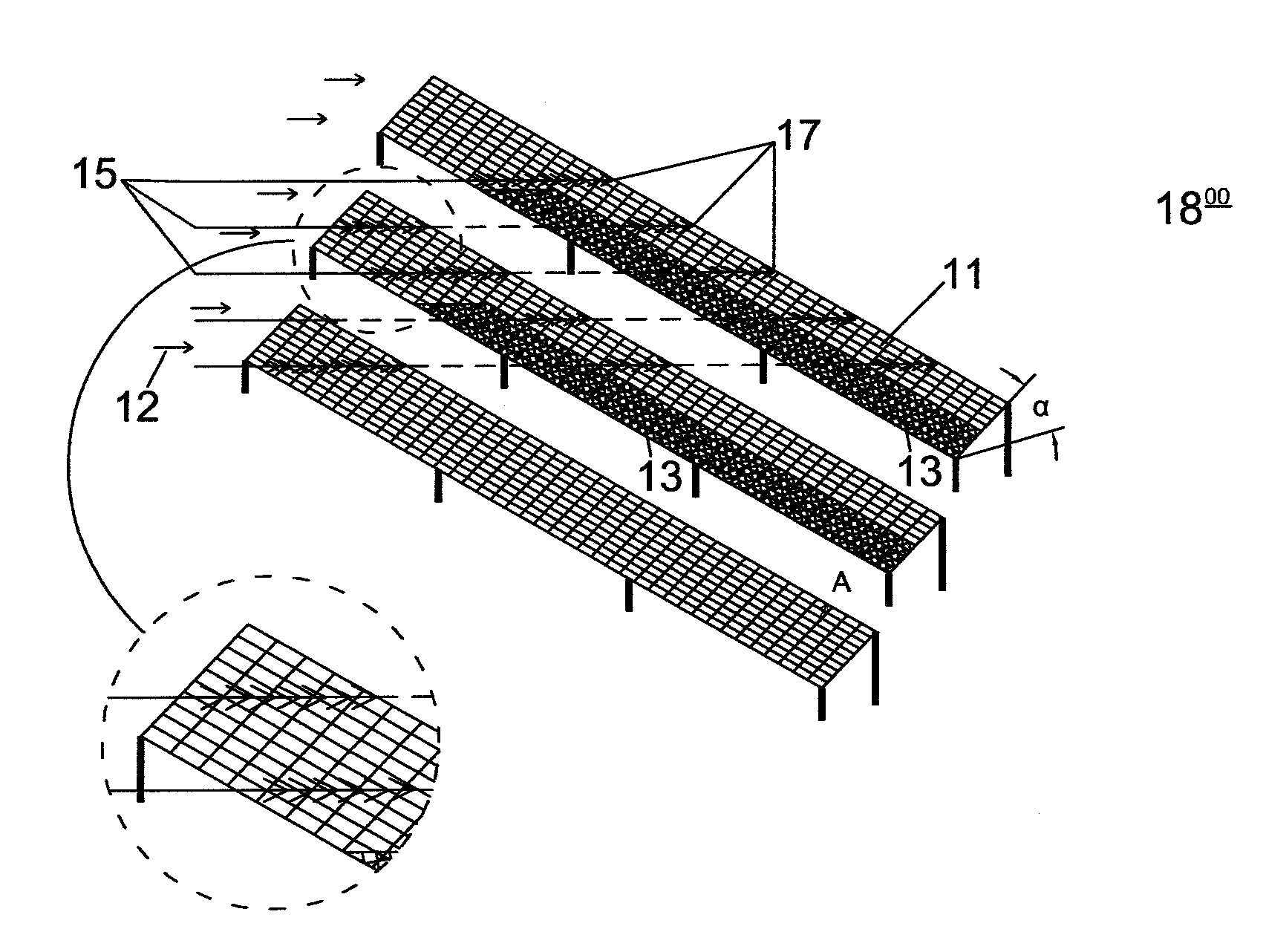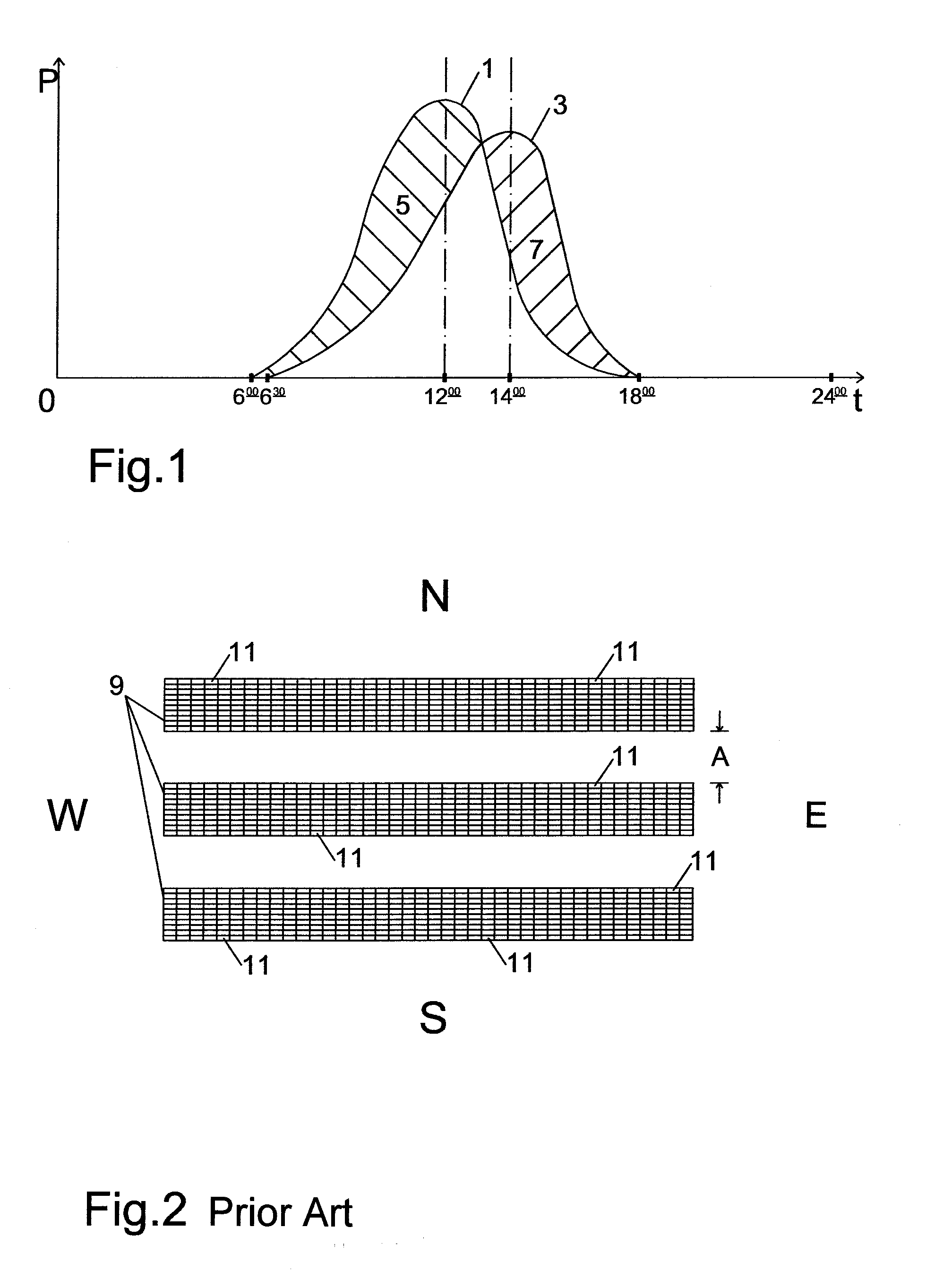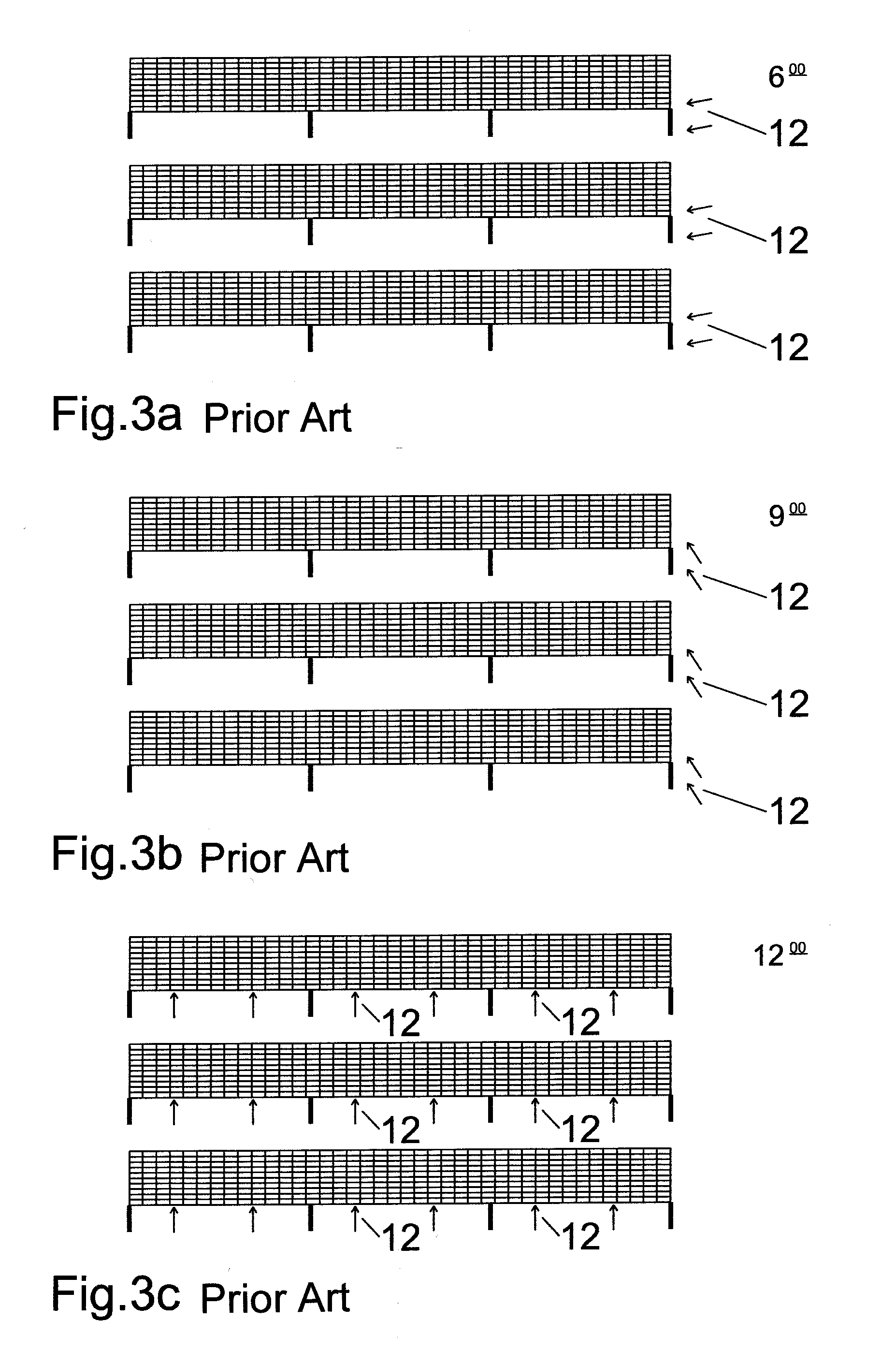Outdoor photovoltaic generator
a photovoltaic generator and outdoor technology, applied in photovoltaics, solar heat collectors for particular environments, heat collector mounting/support, etc., can solve the problems of reducing the electrical resistance of shaded cells, reducing the output, and overall less favorable orientation of pv modules to the sun
- Summary
- Abstract
- Description
- Claims
- Application Information
AI Technical Summary
Benefits of technology
Problems solved by technology
Method used
Image
Examples
Embodiment Construction
[0030]In FIG. 1, which will be used to describe the a desired effect in detail, the photovoltaically generated energy E is plotted over the time of day t. For the sake of simplicity, a time period between 6:00 A.M. and 6:00 P.M. is considered here. At 12:00, the sun is at its highest point, and the PV generator is delivering its maximum output. The behavior of the output or delivered energy E is plotted as a thin line 1. To the left and right of the maximum, the curve has a largely symmetrical shape according to a Gaussian distribution.
[0031]A rotation of the PV generator by, e.g., 30° toward the northeast has the effect that, in the case of a low sun position at 6:00 A.M., at first only the back of the PV modules is illuminated, and only later at, e.g., approximately 6:30 A.M., does the top of the PV modules receive sufficient solar energy to start feeding power to the grid. This effect is illustrated in the path of the curve along the thick line 3, in that the power feed starts la...
PUM
 Login to View More
Login to View More Abstract
Description
Claims
Application Information
 Login to View More
Login to View More - R&D
- Intellectual Property
- Life Sciences
- Materials
- Tech Scout
- Unparalleled Data Quality
- Higher Quality Content
- 60% Fewer Hallucinations
Browse by: Latest US Patents, China's latest patents, Technical Efficacy Thesaurus, Application Domain, Technology Topic, Popular Technical Reports.
© 2025 PatSnap. All rights reserved.Legal|Privacy policy|Modern Slavery Act Transparency Statement|Sitemap|About US| Contact US: help@patsnap.com



